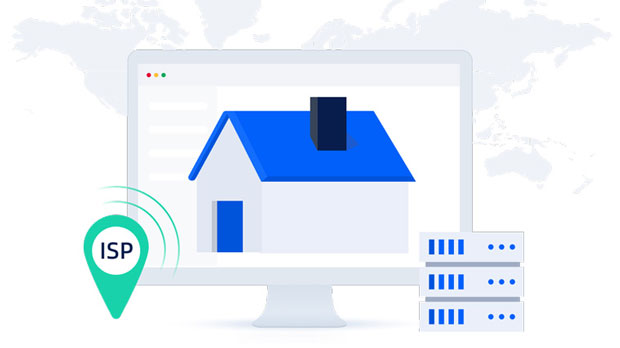Automatically switching a socks5 proxy in Google Chrome can provide significant advantages for users who need to switch between different networks or geographic locations frequently. Whether you're a business user trying to access region-specific content or a privacy-conscious individual concerned about security and anonymity, having a system in place to manage proxy settings can save you a lot of time and hassle. In this article, we will explore the need for automatic proxy switching, the tools available to help you do so, and the technical aspects of configuring Chrome to switch socks5 proxies automatically. Introduction: The Need for Automatic SOCKS5 Proxy Switching in ChromeFor many users, particularly those dealing with sensitive information or needing access to content restricted by geographic location, using a proxy server has become a routine part of their online activities. SOCKS5 proxies, which route internet traffic through a third-party server to mask your IP address, are popular due to their flexibility and ability to handle various types of internet traffic. However, manually switching between different proxies can be time-consuming, particularly for users who need to maintain secure and private browsing across different locations. This is where the automatic switching of SOCKS5 proxies in Google Chrome comes in, allowing for a seamless browsing experience that adjusts proxy settings based on user-defined criteria. In this article, we’ll dive deep into how you can configure Chrome to automatically switch between SOCKS5 proxies, improving efficiency and privacy while browsing the web.Understanding SOCKS5 Proxy: A Quick OverviewBefore we dive into the process of setting up automatic proxy switching, it’s important to first understand what SOCKS5 proxies are and how they function. SOCKS5 is a type of proxy server that supports a wide range of internet protocols, including HTTP, FTP, and even non-HTTP-based protocols like P2P. The main advantage of using SOCKS5 proxies is their ability to route all types of traffic, offering greater flexibility than traditional HTTP or HTTPS proxies.One key benefit of SOCKS5 proxies is that they don’t modify the data being transmitted. This means there’s no interference or modification of your packets, providing an unmodified and secure connection. Additionally, SOCKS5 proxies can authenticate with a username and password, offering an extra layer of security.For users who need to use proxies in different locations or networks, the ability to switch between them automatically is crucial for maintaining privacy, circumventing geo-blocked content, or simply optimizing internet speed and connection reliability.Challenges with Manual Proxy Switching in ChromeManually changing proxy settings in Chrome can be a cumbersome process. Users typically have to access Chrome’s settings or system-wide network preferences to input proxy configurations whenever they want to switch locations or servers. For frequent travelers or those who need to frequently toggle between different networks (such as for work, gaming, or streaming), this manual approach can quickly become inefficient and annoying.In addition, Chrome does not natively support automatic switching of proxies based on location or specific conditions. This means users are left to either keep track of their proxies manually or rely on third-party tools to achieve the automation they need.Methods to Automatically Switch SOCKS5 Proxy in ChromeThere are several ways to automate the switching of SOCKS5 proxies in Chrome. Depending on your technical proficiency and specific use case, you can choose from a variety of approaches, including using browser extensions, scripts, or external tools. Here are the most common methods:1. Using Browser ExtensionsBrowser extensions are perhaps the easiest way to manage SOCKS5 proxies automatically in Chrome. These extensions often allow you to set up multiple proxies, and automatically switch between them based on user-defined triggers such as URL patterns, time of day, or specific networks. Extensions can integrate directly into the Chrome interface, providing a seamless user experience.Some extensions offer features such as automatic proxy rotation, which periodically changes the socks5 proxy server to ensure anonymity and security. This can be useful for users who don’t want to be manually involved in changing their proxies every time they switch locations or need a new server.However, it’s important to note that not all proxy extensions are equally reliable. It’s crucial to carefully review extension features, reviews, and security practices to ensure they meet your needs and expectations.2. Using Proxy Management SoftwareAnother method for automating SOCKS5 proxy switching is through the use of dedicated proxy management software. These software solutions provide more robust and customizable options for managing proxy configurations. They often come with features like proxy rotation, scheduling, and location-based triggers.For instance, proxy management tools can be set up to automatically detect the network you're connected to and switch to the appropriate proxy server based on your predefined rules. These tools can also offer advanced analytics, such as the ability to monitor proxy performance, detect slow or unresponsive proxies, and rotate between proxies for optimal performance.3. Using Scripts for Custom AutomationFor more tech-savvy users, custom scripts can offer an even more tailored approach to automatic SOCKS5 proxy switching. Using tools like AutoHotkey (for Windows) or Automator (for macOS), users can write scripts that automatically change proxy settings in Chrome based on specific conditions, such as location, network, or application behavior.Scripts can be designed to change the system-wide proxy settings, which would affect Chrome's use of SOCKS5 proxies. Alternatively, they can interact directly with Chrome’s internal settings or use Chrome’s command-line flags to switch proxy servers when certain conditions are met.The flexibility of scripting allows for a high degree of customization. However, it does require some programming knowledge and an understanding of how Chrome handles proxy settings.4. Using VPNs with Proxy Switching CapabilityWhile not specifically designed for SOCKS5 proxies, many VPN services offer a feature that allows users to switch between multiple servers, including SOCKS5 proxy servers, automatically. These VPN tools can be configured to automatically connect to different servers depending on the user’s location, network conditions, or preferences.While VPN-based solutions can provide added security, they may not be suitable for all types of SOCKS5 proxy use. For users who need more control over their SOCKS5 proxy connections, a dedicated proxy management solution or a browser extension may be more effective.Best Practices for Managing SOCKS5 Proxy Switching in ChromeOnce you have decided on the method of automatic proxy switching, there are a few best practices to ensure your system remains secure and efficient:1. Use Reliable and Secure Tools: Whether you're using an extension, software, or script, always opt for reputable solutions. Ensure that the tool you’re using doesn’t compromise your security or leak your personal information. 2. Monitor Proxy Performance: Regularly check the health of your proxy servers to ensure they’re operating correctly. An unreliable or slow proxy can severely impact your browsing experience.3. Maintain Proxy Rotation: If anonymity is a priority, make sure your system is set up to rotate proxies at regular intervals to prevent your activities from being tracked or monitored.4. Test Proxies Before Using Them: Always verify that your proxies are functioning correctly before relying on them for security-critical tasks. Some proxies may have slower speeds, be geographically restricted, or even have security vulnerabilities.Conclusion: Achieving Seamless Proxy Switching in ChromeAutomatically switching SOCKS5 proxies in Chrome is a practical solution for users who need to navigate between different networks or require enhanced privacy while browsing. By using tools like browser extensions, proxy management software, custom scripts, or VPNs, users can streamline the process of managing proxies, making it far more efficient and user-friendly. With the right setup, users can enjoy a seamless browsing experience, whether they are accessing content from different locations, maintaining privacy, or simply optimizing their internet speed. As with all technology solutions, it’s important to stay informed about the tools you're using and regularly evaluate their effectiveness to ensure a smooth and secure internet experience.
Jan 02, 2025






















































